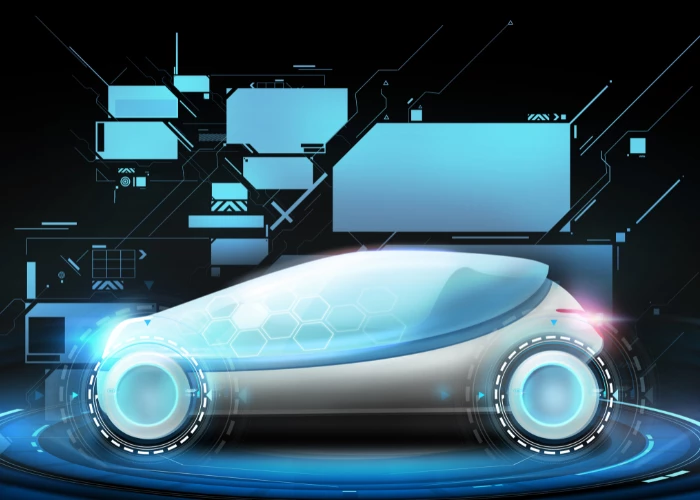Autonomous car safety needs a new form of communication. Whether you’re an engineer, a policy maker, or reporting on the most exciting change to the auto industry perhaps of all time.
Regardless of which sector of the automotive industry you represent, the arrival of the autonomous car represents the biggest single reinvention of the genre since the Benz Motorwagen first turned a spindly wheel back in 1885. But imagine you were communicating the idea of the personal automobile to a person of that time – how would you assure a brand-new driver that they were fully in control of their own vehicle despite the fact that it’s powered by a completely unfamiliar technology?
While we take it for granted that the car is part of modern life today, the arrival of autonomy shifts it back into the realm of the unknown, requiring a new way of thinking from all major stakeholders:
A Self-driving Car Engineer opinion
We posted Principal Engineer from the University of Warwick, Siddartha Khastgir’s TEDx, talk 'How safe does a driverless car need to be?' earlier this month. Also an Automotive IQ returning speaker, one of Khastgir’s key findings in his PhD research is that communication of how safe an autonomous car is can’t be done simply by saying how many miles a particular car has driven in testing without having an accident. At the engineer level, this metric is easy to produce, and common across all those developing autonomous car technology.
However, not all miles are created equal, prompting Khastgir’s call for the adoption of the term ‘smart miles’ or those that really challenge the technology to develop – foggy weather, sunset lighting and so forth.
Similar sentiments were made in a wide-ranging Wired magazine piece on self-driving car metrics that included contributions from Waymo, and its former director, Chris Urmson, calling for better ways of communicating the progress made across the self-driving car industry. The continued lack of agreement on exactly what that should be, be it challenging miles driven, distance without deactivating full autonomous drive, or something other, however, still remains.
It’s easy to forget that to a regular consumer, ‘autonomous car’ is a generic term. Think about the last time you rode in an elevator or took an escalator – there are numerous brands of lift out there, all doing the same thing, transporting someone from A to B, but if the cable snapped, and the emergency brakes failed, the brand is irrelevant. If one autonomous car crashes, it doesn’t matter which one – they’re all tarred with the same brush. Therefore, the lack of agreement seen across the industry is troubling, particularly in light of the fatal Uber accident last year.
As analysed by Automotive IQ in its five setbacks to the future of mobility story, the need for the mobility industry to work together in the aftermath of what happened in Tempe, Arizona, has never been more important. Primarily to ensure that safety is absolutely paramount, but also to ensure that the thousands of miles, smart or otherwise, already undertaken in self-driving mode, count for something in the eyes of sceptical consumers.
The fragmentation of the industry is a concern – without coming together to solve problems, particularly those surrounding safety, consumers will still be able to vote with their feet.
Autonomous Car Regulation
“The biggest current challenge today is a patchwork of regulations where today it's very difficult for an autonomous vehicle to go over state, county and city lines. We need to arrive at a national framework when an autonomous vehicle can go from Los Angeles to New York autonomously.”
These are the words of Grayson Brulte, the Co-Chair of the Mayor’s Autonomous Vehicle Task Force for the City of Beverly Hills, talking to Automotive IQ. This point is another key to unlocking the potential of self-driving cars. The regulations are one thing, but a review of the media surrounding this topic reveals a deep concern that the mobility industry is running before it can walk, and making decisions that regulations cannot keep up with in the process.
In the US, it’s up to individual States to set their own rules governing on-road testing of self-driving cars. Bloomberg examined these implications in an exploration of autonomous car safety, discovering that roadblocks to overcoming the challenges of self-driving cars are governmental as well as technological.
From an industry perspective it feels like the there’s a need to meet regulators half way. Working with policy makers to ensure that self-driving cars are tested safely is key to ensuring maximum consumer confidence. Accidents are part of life, but avoidable ones are a hard pill to swallow where there is so much unfamiliarity about the technology.
Let’s not get carried away
There’s no doubting that the mobility solution of the future is hugely challenging. But it’s exciting, too, which prompts calls for caution in just how fast the industry should move. What’s encouraging is that there is an acknowledgement from the very engineers developing the technology that a better way of communicating just how sophisticated self-driving cars has come is required – suggestions to its solution are most welcome.
It’s also clear that the regulatory framework lags behind the technology. This is not news. However, there is scope here for the industry to meet the policy makers half way, not running before they can walk, and ensuring that the positive benefits to autonomous cars become clear just as the revolution the personal automobile provided once the first ever drivers got behind the wheel.
The car industry is at a point of great change but must look outside itself to realise that a jump from Level 1 to Level 5 autonomy is not realistic. Study just about any auto show from the last four years and you will see steering-wheel-less concepts where people freely work and play, completely removed from the process of driving the car. In the parking lots of those very shows are cars capable of automatically adjusting their speed at a cruise or even parking themselves. What’s missing is a middle-ground between those worlds – and communicating how we bridge the gap from Level 1 to Level 5, whether we’re an engineer, policy maker or the media, is a great way to ensure a great, autonomous future.

























